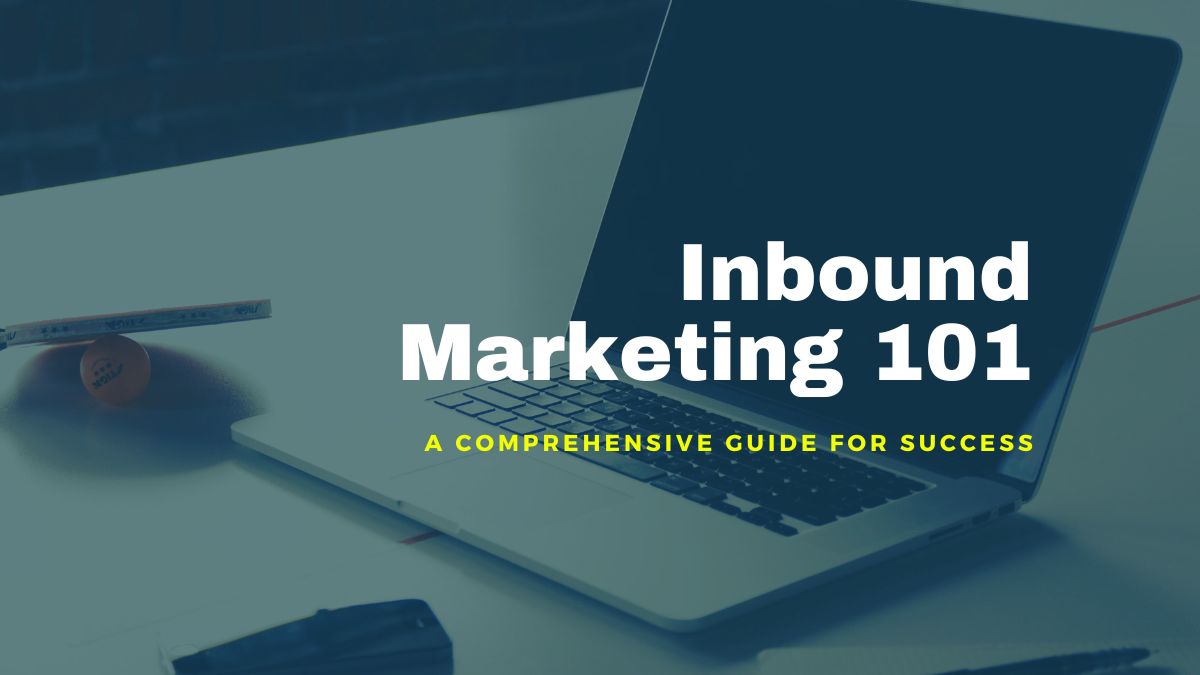
Inbound marketing has revolutionized the way businesses attract, engage, and convert customers. Unlike traditional outbound marketing techniques, which interrupt and push messages onto audiences, inbound marketing focuses on creating valuable content and experiences that naturally draw people in. In this comprehensive guide, we will dive into the core principles and strategies of inbound marketing, equipping you with the knowledge and tools to achieve success.
Understanding Inbound Marketing:
Inbound marketing is a customer-centric approach to digital marketing that involves attracting potential customers through relevant and useful content, rather than interrupting them with unwanted ads. It is a cost-effective method of generating leads and increasing sales by creating valuable experiences that align with the interests and needs of your target audience. Inbound marketing strategies rely on three main components: content creation, search engine optimization (SEO), and social media engagement.
Attracting visitors to your website requires creating high-quality content that addresses the pain points of your target audience. This could be in the form of blog posts, infographics, videos, or podcasts. Your content should be optimized for search engines so it can be easily found when people search for related topics online. Social media engagement involves promoting your content on various social media channels such as Facebook, Twitter, LinkedIn, or Instagram.
Creating an Inbound Marketing Strategy:
Inbound marketing is a powerful strategy that can help businesses generate leads and attract customers without the use of traditional advertising methods. However, to create an effective inbound marketing campaign, certain steps must be taken. One of the most important steps is defining target personas.
Target personas represent your ideal customer – they are the people who are most likely to be interested in and engaged with your product or service. Defining these personas allows you to tailor your marketing efforts specifically towards them, resulting in more effective campaigns and higher conversion rates.
To identify your target personas, start by conducting research into your current customer base. Look for commonalities such as age range, gender, location, job title, or industry sector. You can also conduct surveys or interviews with existing clients to gain insights into their interests and motivations for purchasing from you.
Attracting Your Target Audience:
In today’s digital age, attracting your target audience is essential to the success of your business. One of the most effective ways to do this is through content creation. By creating valuable, informative, and engaging content that addresses your audience’s pain points and interests, you can establish yourself as an authority in your industry and build trust with potential customers.
To create effective content that resonates with your target audience, it’s crucial to first understand their needs and preferences. Conducting market research and analyzing existing customer data can provide valuable insights into what topics are most important to them. From there, you can tailor your content strategy to address those topics in a way that speaks directly to their concerns.
Another critical aspect of content creation for inbound marketing is incorporating keywords. Keywords are specific words or phrases that people use when searching for information online.
4. Engaging and Converting Prospects:
In today’s digital world, lead generation is essential for any business looking to grow and succeed. To capture leads, businesses must implement effective strategies that attract potential customers and engage them in a meaningful way. One of the most popular methods of lead generation is inbound marketing, which involves creating valuable content that draws prospects toward your brand.
One key component of inbound marketing is gated content. This refers to exclusive content that can only be accessed by providing contact information such as name and email address. By offering valuable resources like e-books, whitepapers, or webinars as gated content, businesses can attract high-quality leads who are genuinely interested in what they have to offer.
Another important lead generation strategy is the use of lead magnets. These are free incentives offered to prospects in exchange for their contact information. Lead magnets can come in various forms such as discount codes, free trials or consultations, quizzes or assessments among others.
5. Delighting Customers and Building Advocacy:
In today’s world, where customers have access to multiple options and platforms to make purchasing decisions, businesses need to build strong relationships with their customers. One way of achieving this is by implementing a Customer Relationship Management (CRM) system. A CRM system helps businesses track and manage customer interaction across different channels, providing them with valuable insights that can be used for targeted marketing campaigns.
Inbound marketing is all about attracting customers through valuable content and experiences, rather than interruptive advertising. And a CRM system plays an important role in inbound marketing as well. By tracking customer behavior across different touchpoints, businesses can create personalized experiences that are tailored to the individual needs of each customer. This not only helps in building advocacy but also improves the overall customer experience.
By implementing a CRM system, businesses can also identify key patterns in customer behavior such as repeat purchases or high-value purchases.
Conclusion:
Inbound marketing is a powerful methodology that empowers businesses to attract, engage, and delight their target audience. By understanding the core principles and implementing the strategies outlined in this comprehensive guide, you can create a successful inbound marketing strategy that generates qualified leads, increases conversions, and builds lasting customer relationships. Embrace the inbound approach, adapt to your audience’s needs, and continuously refine your strategy based on data and feedback to achieve long-term success in the digital landscape.




